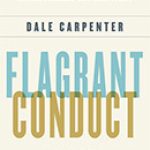Homies and Hermanos: God and Gangs in Central America

Author: Robert Brenneman
New York: Oxford University Press,2012. 294p.
Reviewer: Andrew S. Denney | July 2012
Gangs in Central America continue to demonstrate a strong presence with an overwhelming — often violent — impact on their surrounding neighborhoods and communities. Chiefly among these powerful gang-related influences is the power to persuade youth in typically economically-deprived and socially isolated areas to join these gangs hasta la morgue (i.e. “all the way to the morgue”). However, those that want to leave the gang-life are given few viable options on removing themselves from their pledge to their gang of hasta la morgue with converting to evangelical Christianity deemed as one of the only possible exits from their former lives. Robert Brenneman’s Homies and Hermanos: God and Gangs in Central America is a bold attempt at providing an original and extensive narrative of the role of evangelical Christianity in the process of gang members exiting from their gang life to that of a devout evangelical Christian.
Overall, this book provides an in-depth overview of the emergence of prominent gangs (i.e. MS-13, MS-18, etc.) in Central America over the past three decades, common socio-economic/cultural factors believed to influence youth to join gangs, and first-hand accounts that describe transitioning from gang-life to a life of an evangelical Christian. However, the extensively detailed background information throughout the first three-fourths of the book distracts from the proclaimed focus of the book. The result is a book more about the history of gangs and factors influencing gang membership among youth in the “Northern Triangle” of Central America (i.e. Guatemala, El Salvador, and Honduras), and less about the religious conversions. The argument throughout the book is that shame is the primary factor that influences youth to join gangs and the force that ultimately leads them out of gangs.
The book begins with a chapter that outlines the overall structure and the history of gangs within the “Northern Triangle “of Central America. This chapter is detailed, and accounts for more than a fifth of the total text. Chapter 2 examines the history of Catholicism and evangelical Christianity in the region. Here Brenneman suggests that there are many structural similarities between gangs and churches, foreshadowing why evangelical Christianity is an attractive alternative to gang-life. Chapter 3 begins the primary thrust of Brenneman’s argument that the emotional trait of “shame” is the primary thread that can be found in any major turning point in an individual’s life. Although this is an interesting argument, it becomes cumbersome as the chapter is exceedingly long and the focus on religion is essentially absent.
Chapter 4 outlines “the Morgue Rule” and exceptions based on the difficulty in enforcing it. Here Brenneman draws extensively on interview quotes, which are largely absent earlier in the book. Chapter 5, a fairly short chapter, is the only chapter that actually deals with the content that is foreshadowed in the title and synopsis of this book. Here the difficulties faced by those who turn to evangelical Christianity are elaborated and the similarities in the structures of the gangs and evangelical churches are stressed. Interestingly though, Brenneman discloses that he did not ask individuals to describe their conversion despite this seemingly being central to the research. Chapter 6 shifts to a new focus on Catholic and evangelical gang ministries, gang violence as a “spiritual problem,” and the limits of faith-based ministry in thwarting gangs.
The strengths of this book are that it provides a detailed account of gang life and personal struggles in Central America. However, the book seems miss-titled and may be a disappointment to some, as it is not really focused on the relationship of religion and gangs.
Andrew S. Denney is a doctoral student at the University of Louisville.


